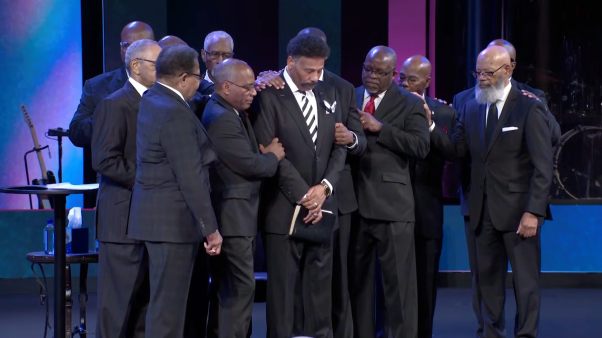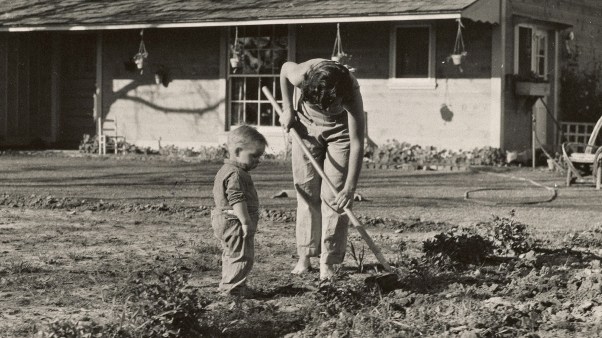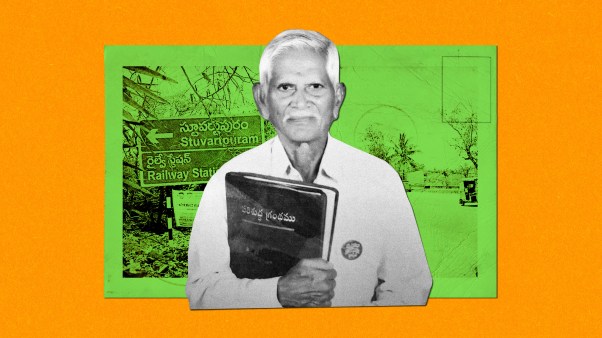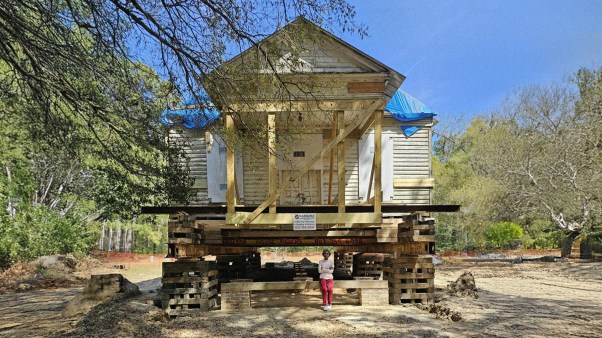"I've always enjoyed building and fixing things," says Brandon Yates.
After high school, Yates became an electrician. A fast study, he advanced quickly through the first two electrical certifications, apprentice and journeyman. Finally, when he became a master electrician in 1999, Yates founded KC One, an electrical contracting services company based in Kansas City, Missouri.
"Craftsman is a lost word in our day," says Yates, now 37, who aims to change that by recruiting hardworking high-school graduates with an aptitude for making things. KC One's apprenticeship program provides on-the-job training and certifications for one or two young electricians each year. "Society teaches these kids that they'll become losers if they become electricians. My job is to unteach them."
The perception that the trades offer less status and money, and demand less intelligence, is one likely reason young people have turned away from careers in the trades for several generations. In Yates's school district, officials recently shuttered the entire shop class program. In our "cultural iconography," notes scholar Mike Rose, the craftsman is a "muscled arm, sleeve rolled tight against biceps, but no thought bright behind the eye, no image that links hands and brain." Thinking, it's assumed, is for the office, not the shop.
But considering that Scripture identifies Jesus himself as a tektōn (Mark 6:3, literally "craftsman" or "one who works with his hands"), we think it's high time to challenge the tradesman stereotype, and to rethink the modern divide between white collar and blue collar, office and shop, in light of the Divine Craftsman who will one day make all things new.
Apprentices and disciples
Craftspeople (harashim)—masons, barbers, weavers, goldsmiths, stonecutters, carpenters, potters—are replete in the Bible. The first person Scripture says was filled with the Spirit of God was Bezalel, who was given "ability and intelligence, with knowledge and all craftsmanship, to devise artistic designs, to work in gold, silver, and bronze" (Ex. 31:1–5, ESV). Passages like these suggest God cares about craftsmanship, above all in his most holy places. From the tabernacle to the temple, what was built was meant to reflect and reveal God's character. The temple was not just a majestic building; it spoke powerfully of his holiness.
Likewise, some of the most important New Testament figures worked with their hands. Like most Jewish sons, Jesus presumably apprenticed to his earthly father, Joseph, a carpenter. Paul built tents alongside Priscilla and Aquila, his friends and partners in the gospel.
Still, "mental work" has long been valued over and against physical labor. Greek philosophy elevated the mind and disdained the body. Christians have resisted this gnostic dichotomy for centuries, albeit often halfheartedly. Other Christians have resisted the spiritual-secular labor divide, notably Martin Luther. The reformer was one of the first to use the word vocation to describe work beyond that of clergy. And he offered strong correctives against the Greek view of work, which prized the scholar's scroll over the weaver's loom: "Works of monks and priests, however holy and arduous they may be, do not differ one whit in the sight of God from the works of the rustic laborer in the field."
"We have to pay attention to detail and care for the contractors we work for," Yates says. "As a tradesperson, I don't know any other way to do that than by doing a really good job. We believe that God exists; therefore, the things we do and make now matter. The whole apprenticeship process is also a discipleship process."
A lost union
For much of history, the vast majority of workers have labored with their hands, often applying highly specialized skills passed down through guilds and families. In the United States, however, the hands-mind divide accelerated after 1911, the year Frederick Winslow Taylor's Principles of Scientific Management was published. A classic work of industrial-era ideals, the monograph focused on gathering the knowledge of craftsmen, organizing it into highly efficient processes, and redistributing that work to laborers as small parts of a larger whole.
Taylor's system, overseen by people in "management," allowed employers to cut costs and increase productivity by standardizing and simplifying manual labor. But, according to Taylor, "All possible brain work should be removed from the shop and centered in the planning or lay-out department." The previous union of craftsman and thinker, skilled laborer and scientist, began to disintegrate. What remained were "white-collar" planners and "blue-collar" workers.
Concerned that craft knowledge was being lost, Congress passed the Smith–Hughes Act of 1917, which provided federal funding for manual training. But because the bill established separate state boards for vocational education, it had the unintended effect of sequestering the trades from the liberal arts.
This division between vocational education and college preparation affects today's college-bound students as well as those who pursue the trades. Most college graduates have had little, if any, training in repairing a leaky toilet or hardwiring a smoke detector. For those brave enough to attempt such feats, the intellectual and technical skill needed to make or fix is often beyond reach. For an awful lot of college graduates, without help, their pipes would be forever clogged. Without reintegrating the trades back into the liberal arts, we will perpetuate the falsehood that plumbers, electricians, and other skilled laborers are somehow less intelligent.
Here and now
"We make things work," says Adrian Groff, vice president at Groff's Home Comfort Team. A business based in Lancaster, Pennsylvania, Groff's team includes dozens of plumbers, carpenters, and electricians. Together they ensure homes, schools, churches, and office buildings fulfill their good design. They repair broken toilets, install safe wiring, and construct ventilation systems. Embedded deeply in the heart of their craftsmanship is a sense of renewal.
Americans who think of skilled manual labor are more likely to think of industrial jobs than the trades. Yet industrial jobs—work performed in highly controlled factory settings—have been especially vulnerable to globalization. Chinese and Indian work forces can perform many industrial tasks previously done in the United States. Outsourcing has benefited other countries: Over the past 30 years, the percentage of Chinese families living in extreme poverty has dropped from 84 percent to less than 10 percent. But many of these jobs will not come back to the United States, causing deep and lasting damage to the livelihoods of American workers.
The manual trades, on the other hand, resist outsourcing. These jobs must be completed here and now. When lights require installation or framing must be constructed, the work can't be done in India. Skilled manual labor has an incarnational quality—it requires a person in the flesh. Cement and rebar can be imported, but highways cannot. For those, we need skilled craftsmen. Indeed, we need them more than ever.
"It's very, very difficult to find people," said Frank Greiner Jr., president of Greiner Industries, another company in Lancaster that employs all types of welders, machinists, and metalworkers. "We need trade-school grads."
The typical millionaire
Across the country, skilled manual labor is in high demand. But it's also in short supply. According to the Associated General Contractors of America, two-thirds of construction companies are struggling to find enough skilled workers, and 79 percent expect the shortage to continue. Meanwhile, craftsmen are retiring in droves. According to Manpower Group, 53 percent of skilled trade workers are 45 or older; 18 percent are between ages 55 and 64. There aren't enough new workers to replace the waves of skilled laborers retiring from the workforce.
Given the types of jobs that are expected to grow in the coming years, the looming skills shortage is particularly acute. A 2010 report published by the U.S. Bureau of Labor Statistics predicted the fastest-growing occupations through 2020. Of the top ten, four were skilled trades: (4) brickmasons, blockmasons, stonemasons, and tile and marble setters; (5) carpenters; (7) reinforcing iron and rebar workers; and (9) pipelayers, plumbers, pipefitters, and steamfitters.
Mike Rowe, host of the former Discovery Channel show Dirty Jobs, recently launched a project to prepare students for the work force. He writes, "A trillion dollars in student loans. Record high unemployment. Three million good jobs that no one seems to want. … The Skills Gap is here, and if we don't close it, it'll swallow us all."
The "skills" he is referring to are the manual trades—butchers and bricklayers, construction workers and carpenters. Rowe has dedicated the Profoundly Disconnected project to providing scholarships for students to attend trade schools—and to challenging the idea that a four-year degree is the key to success.
But can the skilled trades bring "success," especially the economic kind? Even if Americans will always need plumbers, will plumbers be paid enough to support a family?
In truth, skilled craftsmen in the United States earn salaries competitive to their cubicle-dwelling peers. Electricians and plumbers earn on average close to $50,000 annually. The average annual wage for elevator installers and repairers: $73,560; electrical repairers for power plants: $65,950; transportation inspectors: $65,770.
The less technical skill required for a job, the smaller the wages. But for those who have apprenticed in an in-demand trade, times are looking up. In the best-selling book The Millionaire Next Door, Thomas J. Stanley and William D. Danko note that the "typical millionaire" is the skilled craftsman who owns his or her own business.
"Sometimes these guys are so shocked at what they can do and earn," says Yates. "They look at their college counterparts and see them saddled with debt and unable to find work."
The high technology of the human hand
Respect for skilled manual work may be at low ebb, but we see the tide turning. In cities like Denver (where we live), adding the word handcrafted to a product is guaranteed to boost its hip factor—and sales. Many young consumers celebrate firms that deindustrialize, restoring the skill and the unpredictable beauty of quality handwork. David Culp, a contributor to the American Craftsman project, a documentary photography series that celebrates skilled trades, captures the enthusiasm: "The American craftsman still thrives, because when it comes to getting certain things done well and with beauty, a human hand guided by a human eye, ear, and imagination can still be the highest technology of all."
Indeed, at times the work of the trades approaches a fine art. Stacked behind carpenter Josh Mabe's shop in Palmer Lake, Colorado, is old wood gleaned from the rusty corners of the state: a barn door, wine barrels, discarded planks from truck beds, a railroad cart, lumber from the old Leavenworth Prison, oak floors from a 130-year-old Denver home. Each piece is worn, discarded by its owner. But for Mabe, such materials are treasures. "Every time I look at reclaimed wood, I see a story. I see art."
Twenty1Five, Mabe's small furniture business, has attracted statewide attention. The company's name derives from Revelation 21:5 (ESV), where Christ says, "Behold, I am making all things new."
Each of Mabe's pieces is a mosaic of shape and color. His work turns drab boardrooms into wild, elegant arrays of Colorado history, sterile dining rooms into collages of revealed beauty. "I love taking something useless and making it useful," says Mabe.
If there is a renaissance in craftsmanship, it should be welcomed—even heralded—by Christians. After all, we look to a day when we will inhabit a house God has built—a richly prepared mansion that owes its beauty to a single designer and laborer (John 14:2). God is Maker, Creator of the heavens and the earth; and God is Fixer, redeemer and restorer of a broken world.
As we look forward to the heavenly city, whose architect and builder is God (Heb. 11:10), perhaps we owe it to our children and grandchildren to encourage more of them to be makers and fixers, too.
Jeff Haanen is the founder and executive director of the Denver Institute for Faith & Work. Chris Horst is the vice president of development at HOPE International and coauthor of Mission Drift.










